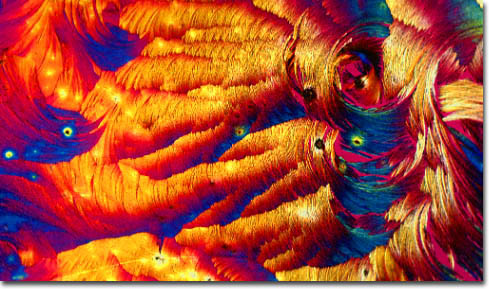|
Hemoglobin is a protein found in the blood of a wide range of animals and is responsible for providing the red blood cells of vertebrates their characteristic color. Comprised of four heme groups encircling a globin group, each hemoglobin molecule is shaped like a tetrahedron, which receives its reddish hue from iron atoms associated with the heme groups it contains. Within the lungs, each of these iron atoms forms a reversible bond with oxygen, and a single cysteine amino acid characteristic of hemoglobin picks up nitric acid. As the hemoglobin circulates through the body, the iron molecules carry the oxygen to the tissues and the nitric acid dilates the capillaries in order that they may receive the essential element. Subsequently, any free nitric oxide and carbon dioxide become attached to the hemoglobin in order that they may be delivered to the lungs, where they are released from the body as waste through exhalation.
|
